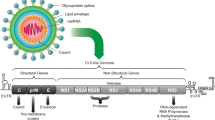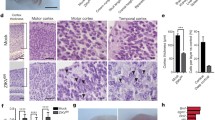Abstract
Zika virus (ZIKV) is a mosquito-borne viral disease associated with fetal microcephaly and other central nervous system (CNS) symptomatology. It was first identified in a Rhesus macaque in Uganda in 1947 and later in humans (Zika fever). In 2015, ZIKV was notified in Northeast Brazil where it was associated with CNS alterations and with rapid epidemic spread. Considering that ZIKV infects Old World monkeys, the aim of this study was to follow its potential in neotropical primates. Here, we show the detection of ZIKV in marmosets and capuchin monkeys captured in Ceara state, Northeast Brazil. Nine (9/132) samples were positive by quantitative RT-PCR assay. Neutralizing antibodies in primates for ZIKV were also detected by PRNT. The ZIKV-positive samples were obtained from peridomestic animals captured in proximity to humans in areas with reports of ZIKV-associated microcephaly cases during the epidemic period. These results reiterate the molecular evidence of ZIKV infection in neotropical primates, and the temporal detection suggests that detection in primates occurred during the epidemic period in humans. However, a continuous surveillance is necessary to exclude the possibility of virus circulation and transmission in wild environments.


Similar content being viewed by others
References
Althouse BNM, Hanley KA, Diallo M, Sall AA, Ba Y, Faye O, Diallo D, Watts DM, Weaver SC, Cummings DA (2015) Impact of climate and mosquito vector abundance on sylvatic arbovirus circulation dynamics in Senegal. The American Journal of Tropical Medicine and Hygiene 92(1):88–97; https://doi.org/10.4269/ajtmh.13-0617 [Online Nov 17, 2014]
Althouse BM, Vasilakis N, Sall AA, Diallo M,Weaver SC, Hanley KA (2016) Potential for Zika virus to establish a sylvatic transmission cycle in the Americas. PLOS Neglected Tropical Diseases 10(12):e0005055; https://doi.org/10.1371/journal.pntd.0005055. [Online: Dec, 2016]
Boorman JPT, Porterfield JS (1956) A simple technique for infection of mosquitoes with viruses. Transmission of Zika virus. Transactions of The Royal Society of Tropical Medicine and Hygiene 3: 238–42
Bueno MG, Martinez N, Abdalla L, Duarte dos Santos CN, Chame M (2016) Animals in the Zika virus life cycle: what to expect from megadiverse Latin american countries. PLOS Neglected Tropical Diseases 10(12):e0005073; https://doi.org/10.1371/journal.pntd.0005073 [Online Dec, 2016]
Buechler CR, Bailey AL, Weiler AM, Barry GL, Breitbach ME, Stewart LM, Jasinska AJ, Freimer NB, Apetrei C, Phillips-conroy JE, Jolly CJ, Rogers J, Freidch TC, O´connor DH (2017) Seroprevalence of zika virus in wild African green monkeys and baboons. mSphere. 2(2). pii: e00392–16; https://doi.org/10.1128/msphere.00392-16. [Online: Mar-Apr, 2017]
Brazil, Ministry of Health (2016) Monitoring cases of dengue, chikungunya and zika virus fever to the epidemiologic week 37, 2016. Boletim epidemiológico 47(34) Available:http://portalsaude.saude.gov.br/images/pdf/2016/agosto/10/2016-026–2-.pdf. [accessed October, 2017]
Brazil, Ministry of Health (2014) Surveillance Guide for Epizootics in Non-human Primates and Applied Entomology for Yellow Fever Surveillance. 2 ed –Brasília: Ministry of Health. Available: http://bvsms.saude.gov.br/bvs/publicacoes/guia_vigilancia_epizootias_primatas_entomologia.pdf. [accessed September, 2017]
Ceara, State Health Department (2017) Epidemiologic Report: Microcephaly and CNS Malformations. May 05 2017. Available: http://www.saude.ce.gov.br/index.php/boletins. [accessed December, 2017]
Chiu CY, San Martin CS, Bouquet J, Li T, Yagi S, Tamhankar M, Hodara VL, Parodi LM, Somasekar S, Yu G, Giavedoni LD, Tardif S, Patterson J (2017) Experimental Zika virus inoculation in a new world monkey model reproduces key features of the human infection. Scientific Reports 7: 17126; https://doi.org/10.1038/s41598-017-17067-w
Dick GWA, Kitchen SF, Haddow AJ (1952a) Zika virus I. Isolation and serological specificity. Transactions of the Royal Society of Tropical Medicine and Hygiene 46(5):509–20
Dick GWA (1952b) Zika virus II. Pathogenicity and physical properties. Transactions of the Royal Society of Tropical Medicine and Hygiene 46(5); 521–34
Favoretto S, Araujo D, Oliveira D, Duarte N, Mesquita F, Zanotto P, Durigon E (2016) First detection of Zika virus in neotropical primates in Brazil: a possible new reservoir. bioRxiv 049395; DOI: https://doi.org/10.1101/049395 [Online April 20, 2016]
Faye O, Freire CCM, Iamarino A, Faye O, Oliveira JVC, Diallo M, Zanotto PMA, SALL AA (2015) Molecular evolution od Zika virus during its emergence in the 20th century. PLOS Neglected Tropical Diseases 15:492; https://doi.org/10.1186/s12879-015-1231-2 [Online November 2, 2015]
Ferreira MS, Castro PHG, Silva GA, Casseb SMM, Dias Junior AG, Rodrigues SG Azevedo Rdo S, Costa e Silva MF, Zauli DA, Araújo MS, Béla SR, Teixeira-Carvalho A, Martins-Filho OA, Vasconcelos PF (2014) Callithrix penicillata: A feasible experimental model for dengue virus infection. Immun Letters 158:126–33; https://doi.org/10.1016/j.imlet.2013.12.008 [Online December 17, 2013]
Forthofer RN, Lee ES, Hernandez M (2007) Analysis of categorical data In: Biostatistics: A Guide to Design, Analysis and Discovery, 2: ed. London: Elsevier p.269–296
Grard G, Caron M, Mombo IM, Nkoghe D, Mboui Ondo S, Jiolle D, Fontenille D, Paupy C, Leroy EM (2014) Zika virus in Gabon (Central Africa)—2007: a new threat from Aedes albopictus? PLoS Negl Trop Dis. 8(2):e2681; https://doi.org/10.1371/journal.pntd.0002681 [Online February, 2014]
Hanley KA, Monath, TP, Weaver SC, Rossi SL, Richmanm RL, Vasilakis N (2013) Fever versus fever: The role of host and vector susceptibility and interspecific competition in shaping the current and future distributions of the sylvatic cycle of dengue virus and yellow fever virus. Infection, Genetics and Evolution 19: 292–311; https://doi.org/10.1016/j.meegid.2013.03.008 [Online March 20, 2013]
Hayes EB (2009) Zika virus outside Africa. Emerging Infectious Diseases 15(9): 1374–50; https://doi.org/10.3201/eid1509.090442
Lanciotti RS, Kosoy OL, Laven JJ, Velez JO, Lambert AJ, Johnson AJ, Stanfield SM, Duffy MR (2008) Genetic and serologic properties of Zika virus associated with an epidemic, Yap State, Micronesia, 2007 Emerging Infectious Diseases 14(8):1232–9; https://doi.org/10.3201/eid1408.080287
Li XF, Dong HL, Huang XY, Qiu YF, Wang HJ, Deng YQ, Zhang NN, Ye Q, Zhao H, Liu ZY, Fan H, Na XP, Sun SH, Gao B, Fa YZ, Tong YG, Zhang FC, Gao GF, Cao WC, Shi PY, Qin CF (2016) Characterization of a 2016 clinical isolate of Zika virus in non-human primates. EBioMedicine. 12:170–177; https://doi.org/10.1016/j.ebiom.2016.09.022 [online September 23, 2016]
Moreira-Soto A, Carneiro IO, Fischer C, Fieldman M, Kummerer BM, Silva HS, Santos UG, Souza BFCD, Liborio Fa, Montenegro MMV, Laroque PO, Fontoura FR, Oliveira AVD, Drosten C, Lamballerie X, Franke CR, Drexler JF (2018) Limited evidence for infection of urban and peri-urban nonhuman primates with Zika and Chikungunya viruses in Brazil. mSphere 3(1) pii: e00523–17. https://doi.org/10.1128/msphere.00523-17.
Musso D (2015) Zika virus transmission from French Polynesia to Brazil. Emerging Infectious Diseases 21(10):1887; https://doi.org/10.3201/eid2110.151125
NIH - National Institutes of Health, National Institute of allergy and Infectious Diseases, LID Statistical Web Tools—Plaque Reduction. Available in: https://exon.niaid.nih.gov/plaquereduction/ [accessed October, 2017]
Oliveira-Filho EF, Oliveira RAS, Ferreira DRA, Laroque PO, Pena Lj, Valença-Montenegro MM, Mota RA, Gil LHVG (2018) Seroprevalence of selected flaviviruses in free-living and captive monkeys in the state of Pernambuco, Brazil. Transboundary and Emerging Diseases 65(4):1094–1097. https://doi.org/10.1111/tbed.12829.
Omatsu T, Moi ML, Hirayama T, Takahashi T, Nakamura S, Tajima S Ito M, Yoshida T, Saito A, Katakai Y, Akari H, Kurane I (2011) Common marmoset (Callithrix jacchus) as a primate model for dengue virus infection: development of high levels of viraemia and demonstration of protective immunity. Journal of General Virology 41:289–96; https://doi.org/10.1099/vir.0.060384-0 [Online December 9, 2013]
Pantoja P, Perez-Guzman EX, Rodriguez IV, White LJ, Gonzales O, Serrano C, Giavedoni L, Hodara V, Cruz L, Arana T, Martinez MI, Hassert MA, Brien JD, Pinto AK, De Silva A, Sariol CA (2017) Zika virus pathogenesis in rhesus macaques is unaffected by pre-existing immunity to dengue virus. Nature Communications 8:15674; https://doi.org/10.1038/ncomms15674
Petersen LR, Jamieson J, Honein MA (2016) Zika virus. The New England Journal of Medicine 275(3): 294–5; https://doi.org/10.1056/nejmc1606769 [Online June 29, 2016]
Rylands AB, Mittermeier RA, de Oliveira MM, Kierulff MCM (2008) Callithrix jacchus. The IUCN Red List of Threatened Species e.T41518A10485463. Available: http://dx.doi.org/10.2305/IUCN.UK.2008.RLTS.T41518A10485463.en. [accessed September, 2017]
Rylands AB, Kierulff MCM (2015) Sapajus libidinosus. The IUCN Red List of threatened Species 2015: e.T136346A70613080. Available: http://dx.doi.org/10.2305/IUCN.UK.2015-1.RLTS.T136346A70613080.en. [accessed September, 2017]
Terzian ACB, Zini N, SAcchetto L, Rocha RF, Parra MCP, DelSarto JL, Dias ACF, Coutinho F, Rayra J, Silva RA, Costa VV, Fernandes NCCa, Ressio R, Delgado JD, Guerra J, Cunha MS, Catão-Dias Jl, Bittar C, Reis AFN, Santos INP, Ferreira ACM, Cruz LEAA, Rahal P, Ullman L, Malossi C, Araujo Jr JP, Widen S, Rezende IM, Mello E, Pacca CC, Kroon Eg, Trindade G, Drumond B, Chiaravalloti-Neto F, Vasilakis N, Teixeira MM, Nogueira ML (2018) Evidence of natural Zika virus infection in neotropical non-human primates in Brazil. Scientific Reports 8(1): 16034. https://doi.org/10.1038/s41598-018-34423-6.
Thompson SJ, Pearce JM, Ramey M (2017) Vectors, hosts and control measures for Zika virus in the Americas EcoHealth https://doi.org/10.1007/s10393-017-1277-2 [Online November 17, 2017]
Vanchiere Ja, Ruiz JC, Brady Ag, Kwehl TJ, Willians CE, Baze WB, Wilkerson GK, Nchete Pn, McClure GB, Rogers DC, Rossi SC, Azar SR, Roundy CM, Weaver SC, Vasilakis N, Simmons JH, Abee SR (2018) Experimental Zika virus infection of Neotropical primates The American Journal of Tropical Medicine and Hygiene 98(1): 173–177 https://doi.org/10.4269/ajtmh.17-0322.
Verona CES, Pissinati AP (2006) Primatas do novo-mundo (Sagui, Macaco-prego, Macaco-aranha, Bugio). In: Cubas ZS, Silva JCR, Catão-Dias JL Tratado de Animais Selvagens (medicina veterinária), São Paulo: Rocca Brasil, p.358–377
WHO - World Health Organization (2017a) Zika fact sheet Available: http://www.who.int/mediacentre/factsheets/zika/en/. [accessed December, 2017]
WHO – World Health Organization (2017b) The history of Zika Virus—Digital Timeline. Available: http://www.who.int/emergencies/zika-virus/history/en/. [accessed December, 2017]
WHO - World Health Organization Guidelines for Plaque Reduction Neutralization Testing of Human Antibodies to Dengue Viruses (2007) Available in: http://apps.who.int/iris/bitstream/10665/69687/1/who_ivb_07.07_eng.pdf [accessed June, 2017]
Acknowledgements
The authors thank all the staff from the Health Department of Ceará State: NUVET, Regional Health Secretaries, Municipal Health Secretaries and Agents of endemic diseases. Their contribution and support was essential to locate the animals, capture these primates, to return to the sites of capture and to establish contact and collaboration of the local population. We thank Bruno Facchini for making the Fig 1.
Author information
Authors and Affiliations
Corresponding author
Ethics declarations
Conflict of interest
This study was funded by Sao Paulo Research Foundation—FAPESP (Grant 2014/16333-1). Authors Araujo, Danielle and Machado, Rafael have received research grants from the Coordination for the Improvement of Higher Level, or Education, Personnel—CAPES. Author da Crus, Nathalia has received research grant from the National Council for Scientific and Technological Development—CNPq. Author Mesquita, Flavio has received research grant from the Sao Paulo Research Foundation—FAPESP.
Ethical Approval
All ethical procedures were observed and the activities had official authorization from IBAMA and the Chico Mendes Institute for Conservation of Biodiversity (Sisbio license 45196-4).
Human and Animal Rights
All applicable institutional and/or national guidelines for the care and use of animals were followed.
Electronic supplementary material
Below is the link to the electronic supplementary material.
Rights and permissions
About this article
Cite this article
Favoretto, S.R., Araujo, D.B., Duarte, N.F.H. et al. Zika Virus in Peridomestic Neotropical Primates, Northeast Brazil. EcoHealth 16, 61–69 (2019). https://doi.org/10.1007/s10393-019-01394-7
Received:
Revised:
Accepted:
Published:
Issue Date:
DOI: https://doi.org/10.1007/s10393-019-01394-7




